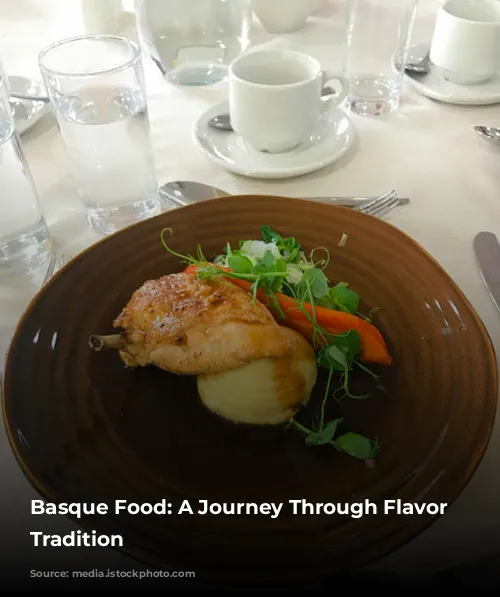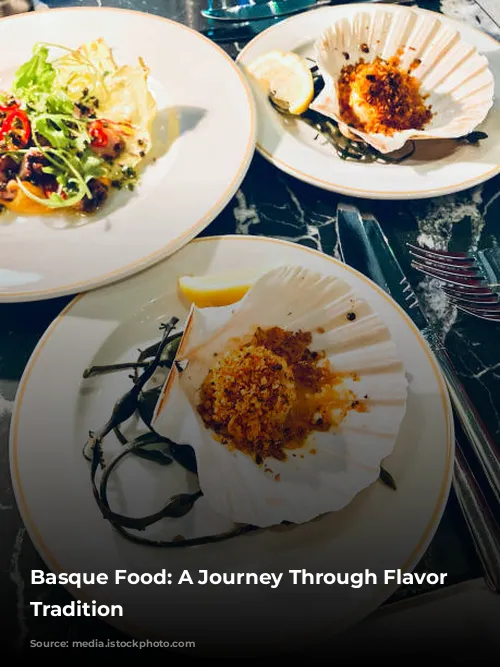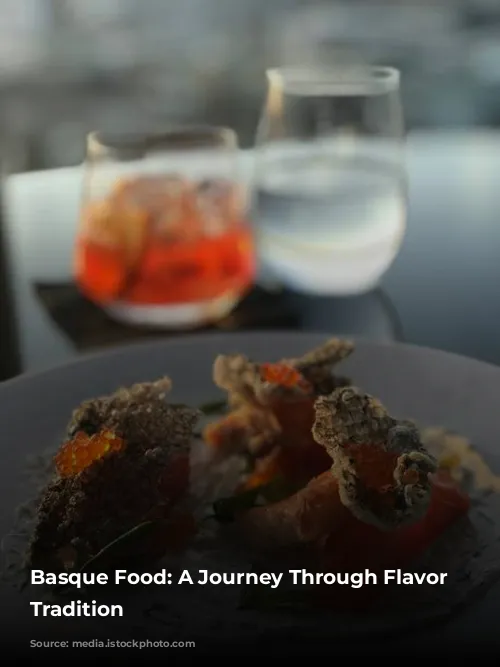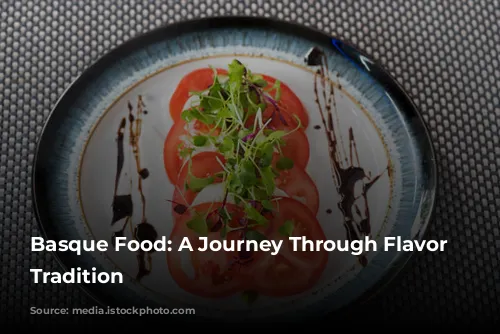The Basque Country is a culinary paradise, with a vibrant food scene that has earned it a prestigious second place in Spain for Michelin-starred restaurants. The Basque Country is known for its unique and flavorful cuisine, which is deeply rooted in its history and culture.
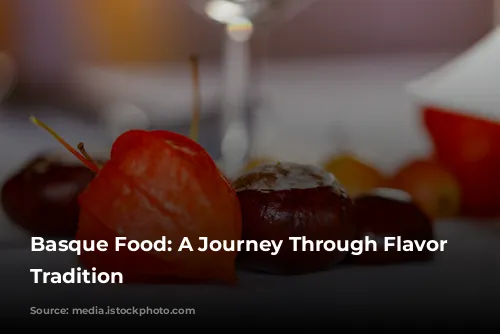
A Taste of Basque Traditions
Basque food is all about the ingredients and the techniques. It’s a celebration of the region’s rich bounty, from the fresh seafood of the Cantabrian Sea to the fertile farmlands and rolling mountains. The mild climate allows for a diverse range of fruits and vegetables, while the region’s grazing lands provide the perfect setting for raising livestock.
Every dish is a reflection of the Basque people’s deep connection to their land and their commitment to traditional recipes. From the humble pintxo to the elaborate dishes enjoyed at upscale restaurants, Basque food is an experience that will tantalize your taste buds and leave you wanting more.
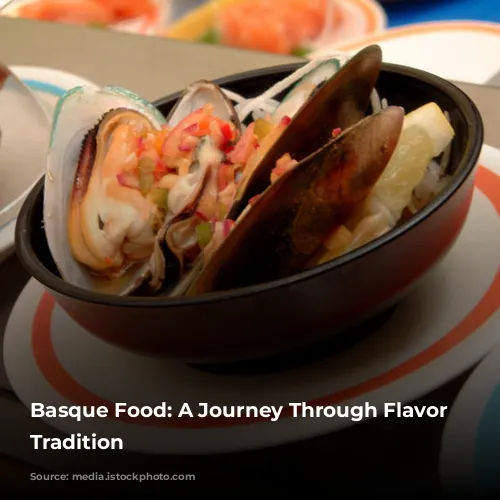
The Pintxo: A Basque Tradition
The pintxo, a small bite-sized tapa, is an integral part of Basque culture. It’s a tradition that is as much about social interaction as it is about the food itself. You’ll find pintxos on every street corner, with each bar and restaurant offering its own unique selection of these delicious treats.
Pintxos are usually served on a small piece of bread or a toothpick and can be either cold or hot. Cold pintxos are often displayed on a counter, while hot ones are typically ordered from a waiter.
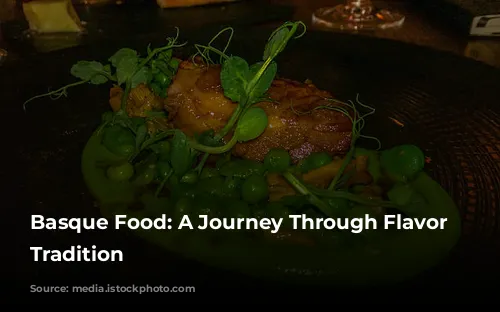
Pintxos to Try
Gildas: These iconic pintxos are a must-try. They are typically made with a skewer of a chilli pepper, an olive, and an anchovy, all resting in olive oil.
Cod in Oil: This simple but delicious pintxo features salted cod that’s been soaked to remove excess salt, then steeped in olive oil with chilli, garlic, and parsley. It’s served on a slice of bread.
Moroccan-Inspired Pintxos: You might be surprised to learn that some of the most popular pintxos have roots in Moroccan cuisine. These skewers, served hot with dips, were introduced decades ago and have become a staple in Basque culture.
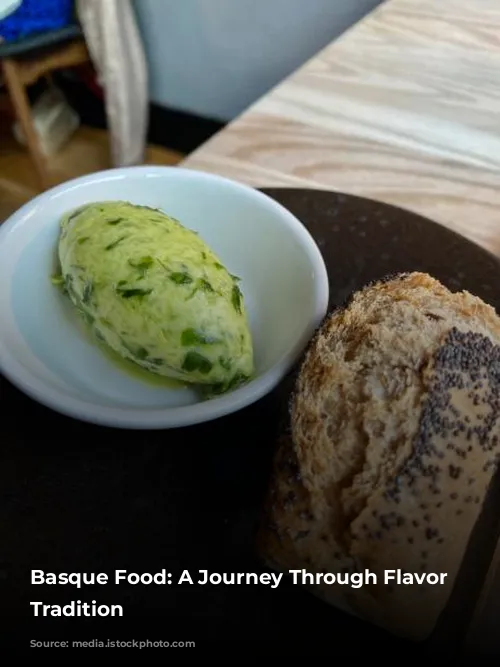
Beyond the Pintxo: Exploring Basque Cuisine
If you’re looking for a more substantial meal, Basque cuisine has something for everyone.
Marmitako: This hearty stew, born on the Cantabrian Sea, is a testament to the ingenuity of Basque fishermen. Originally, tuna fish was slow-boiled with potatoes in saltwater. Today, it’s made with a richer broth, incorporating onions, tomatoes, green peppers, and choricero pepper, with fresh tuna added at the end.
Txangurro: This delicious dish features the centollo (spider crab). The meat is carefully removed from the body and claws, then mixed with a sauce made from poached onion, carrot, leek, and brandy. The mixture is then stuffed back into the shell, topped with breadcrumbs and parsley, and baked.
Stuffed Peppers: While stuffed peppers are common in many cuisines, the Basque version is particularly special. Red piquillo peppers are typically stuffed with a variety of fillings, including veal, shrimp, and tuna. However, the most traditional stuffing is salted cod, soaked for 24 hours, then combined with onion, tomato, bechamel sauce, white wine, and olive oil.
Angulas: This dish is a local delicacy made with eel. The eel is cooked with olive oil, garlic, and chili.
Merluza en Salsa Verde: This dish features hake or cod cooked in a delicious green sauce made with fresh parsley. The sauce is perfect for dipping bread.
Salsa Vizcaina: This versatile red sauce is frequently used in Basque gastronomy. It’s most often served with fish, but it can also be used with meat and vegetables. The traditional version of the sauce doesn’t use tomatoes, but they are sometimes added in variations outside of Spain. The authentic version is made with a rehydrated choricero pepper, onion, flour, and stock. It’s then strained to create a smooth sauce. Salsa Vizcaina is the base for many famous Basque dishes, such as Bacalao en salsa vizcaina (cod in Biscayne sauce), Callos a la vizcaina (tripe in Biscayne sauce), Manos de cerdo con salsa vizcaina (pork knuckle in Biscayne sauce), and Caracoles a la vizcaina (snails in Biscayne sauce).
Kokotxa: This traditional Basque dish features the cheek of the hake or cod, which is typically served with a green sauce.

The Cod Connection: A Culinary Legacy
Cod plays a significant role in Basque cuisine. This is a fascinating story of a mistake that led to a culinary revolution.
In the early 19th century, a Bilbao merchant accidentally placed a huge order for cod with a supplier in England. The cod arrived just before the siege of Bilbao, becoming a lifeline for the city’s population. The people of Bilbao became resourceful, using the cod in their cooking, creating dishes that are still beloved today, like Bacalao al pil pil (cod cooked with garlic and chili), Bacalao a la vizcaina (cod with potatoes and leeks), and Porrusalda (cod with potatoes and leeks).
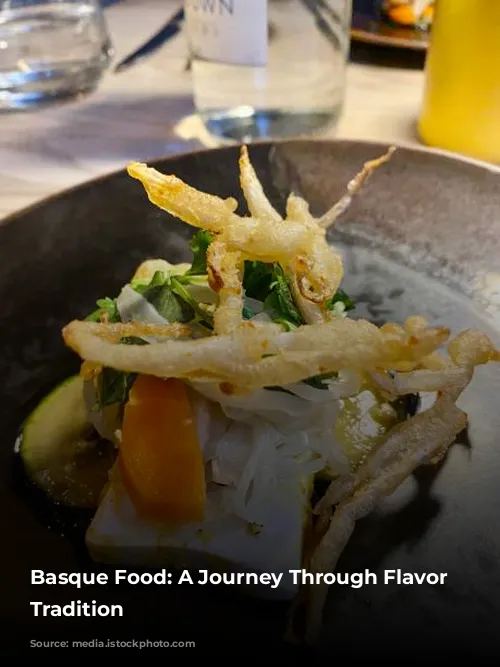
Squid Ink Delights
Squid or baby squid in black sauce is a must-try dish in the Basque Country. The squid ink is cooked with onions, creating a rich and flavorful sauce. It’s often served with a side of rice or fried potatoes.
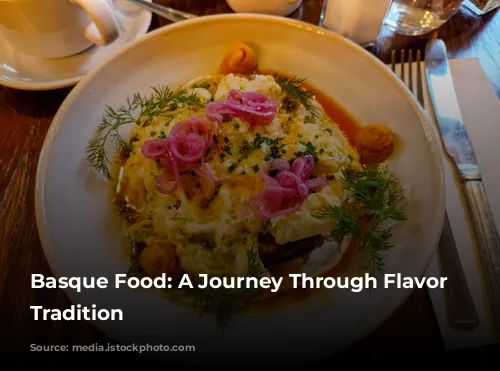
Steak and Cider: A Perfect Pairing
The Chuletón, or rib steak, is another Basque culinary gem. This tradition began in the cider-producing region just outside of San Sebastian. Basque farmers would trade beef for cider at tastings. The cider houses would then cook the steak over charcoal and serve it to patrons as an incentive to purchase cider.
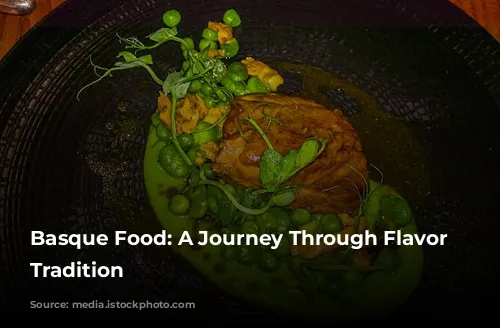
Sweet Treats: A Celebration of Basque Pastry
Don’t leave the Basque Country without indulging in some of its delicious desserts.
Goxua: This dessert, originally from Vitoria, features a combination of cream, sponge cake, and caramel.
Pastel Vasco (Gateau Basque): This custard-filled sponge cake, sometimes served with cherries, originated in the French Basque territory. It’s a simple homemade cake that’s often found at local markets and agricultural fairs.
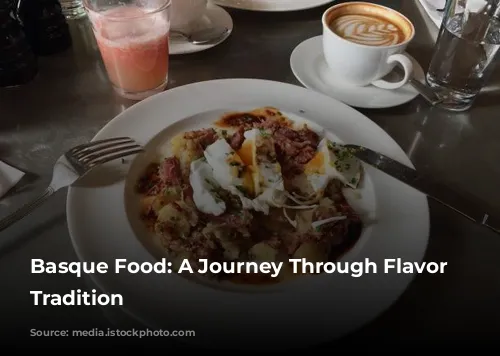
Experience Basque Cuisine: A Culinary Journey You Won’t Forget
Basque cuisine offers a unique blend of tradition and innovation. From the humble pintxo to the elaborate dishes found in upscale restaurants, there’s something to satisfy every palate. So, if you’re planning a trip to the Basque Country, be sure to savor the flavors of this culinary paradise. You won’t be disappointed!**
